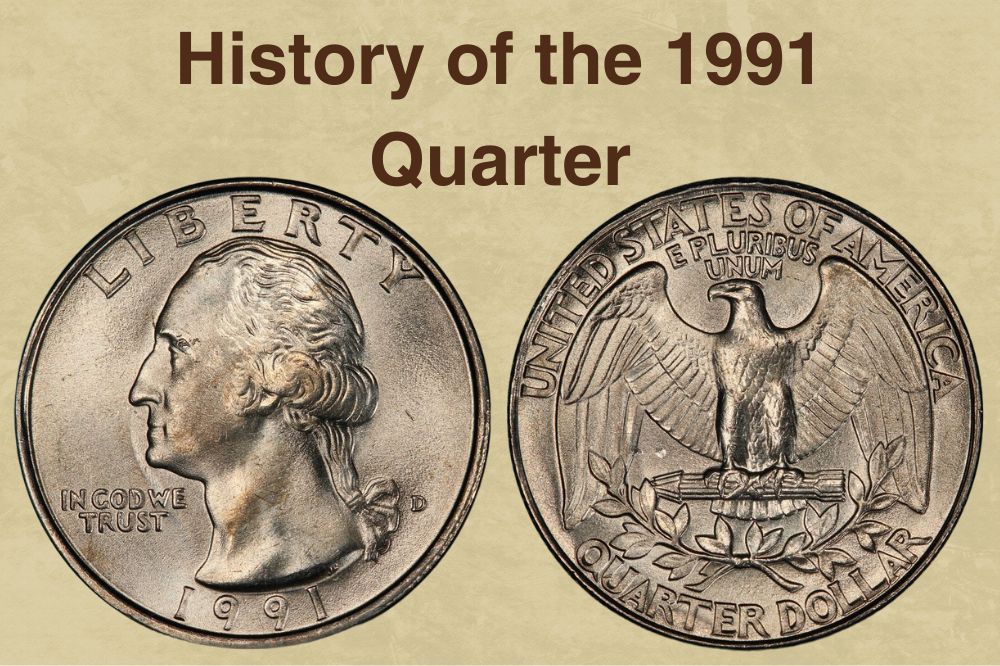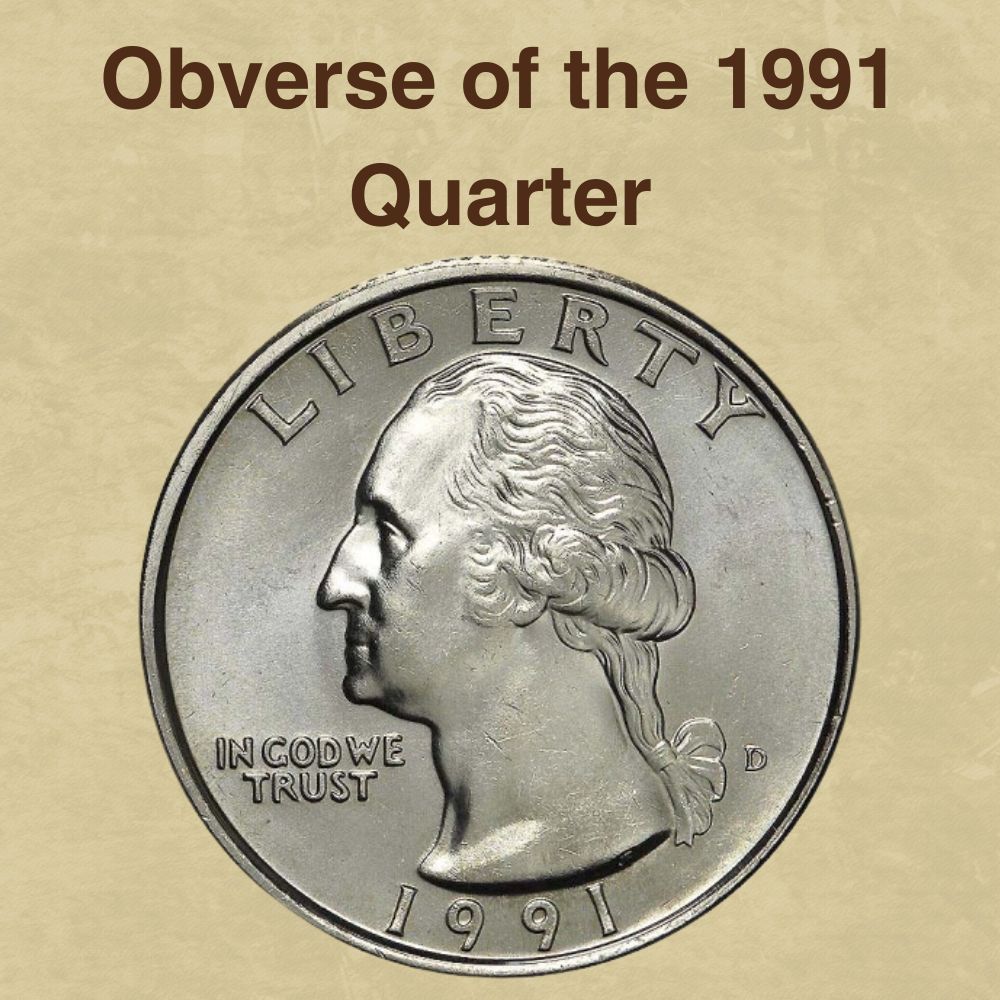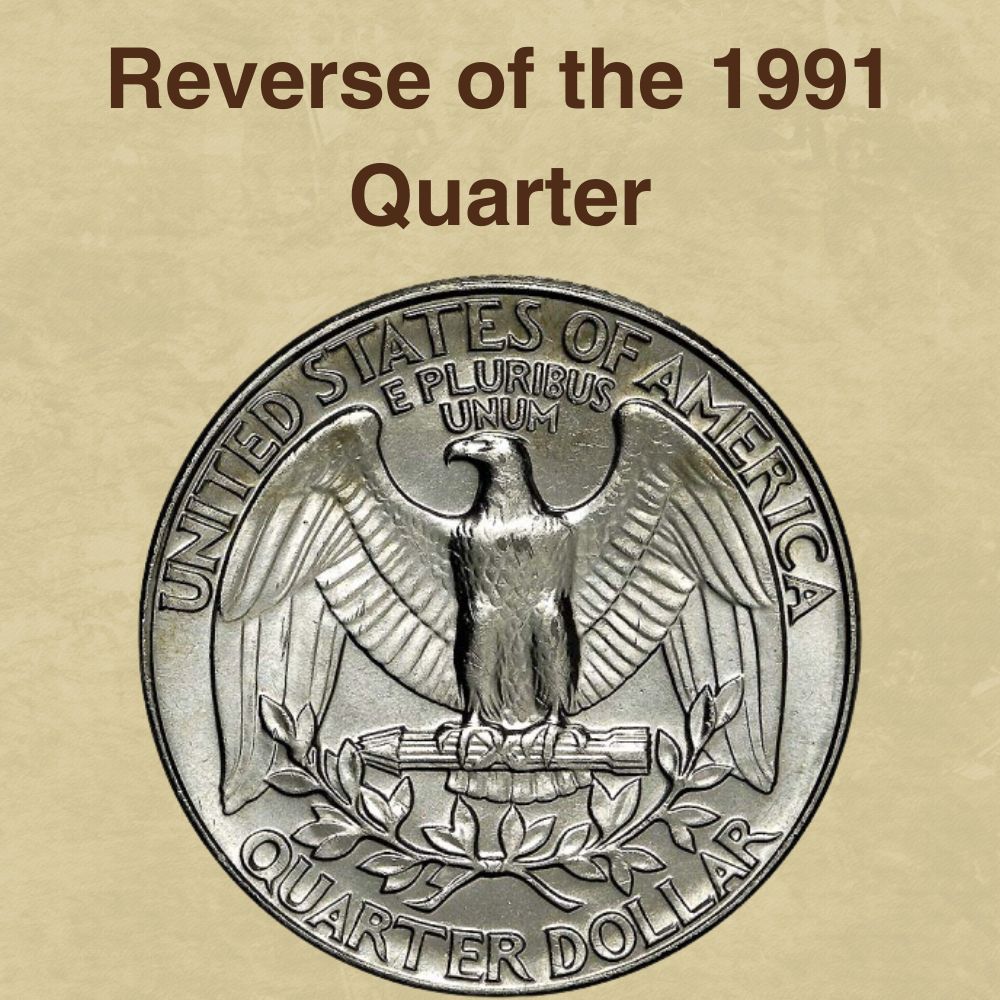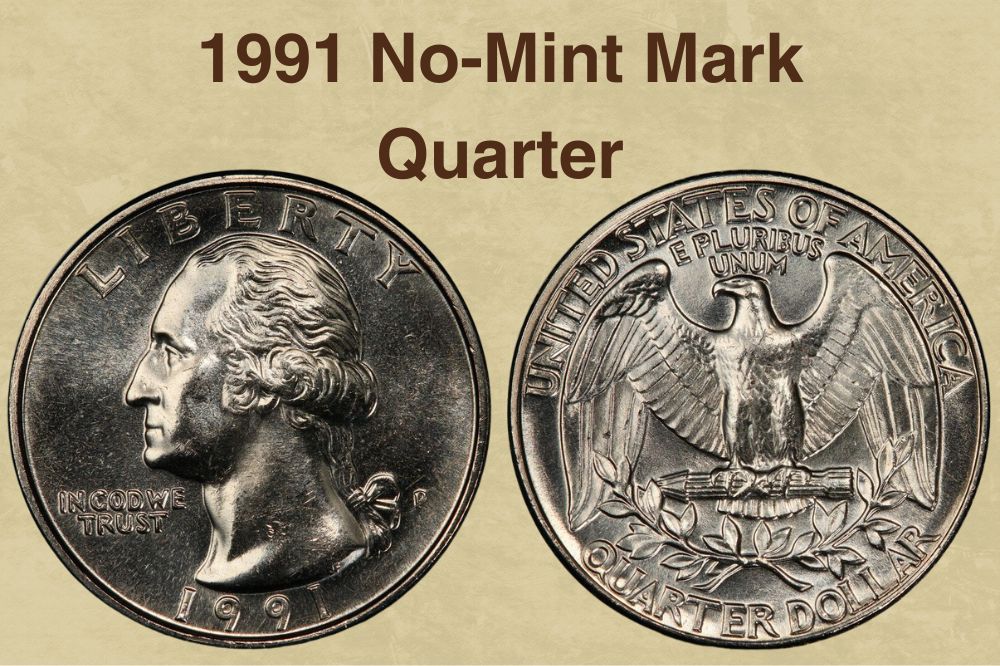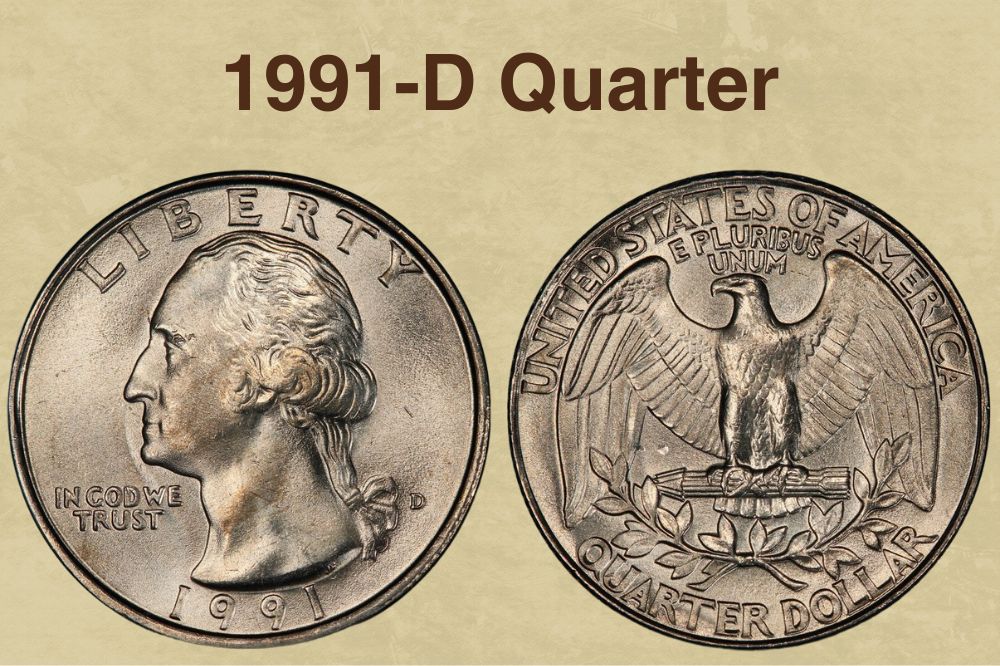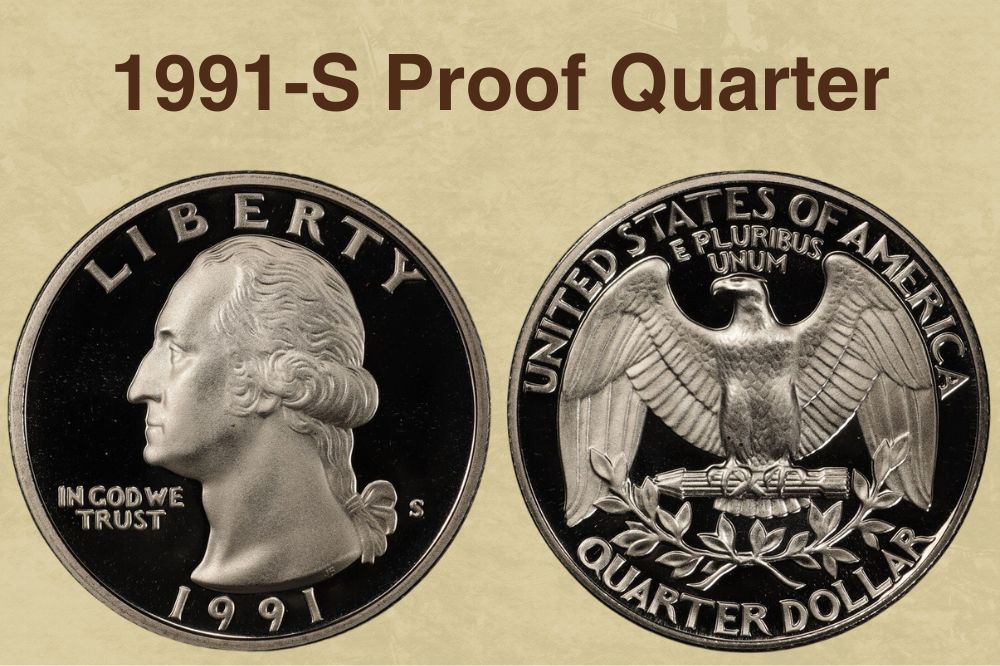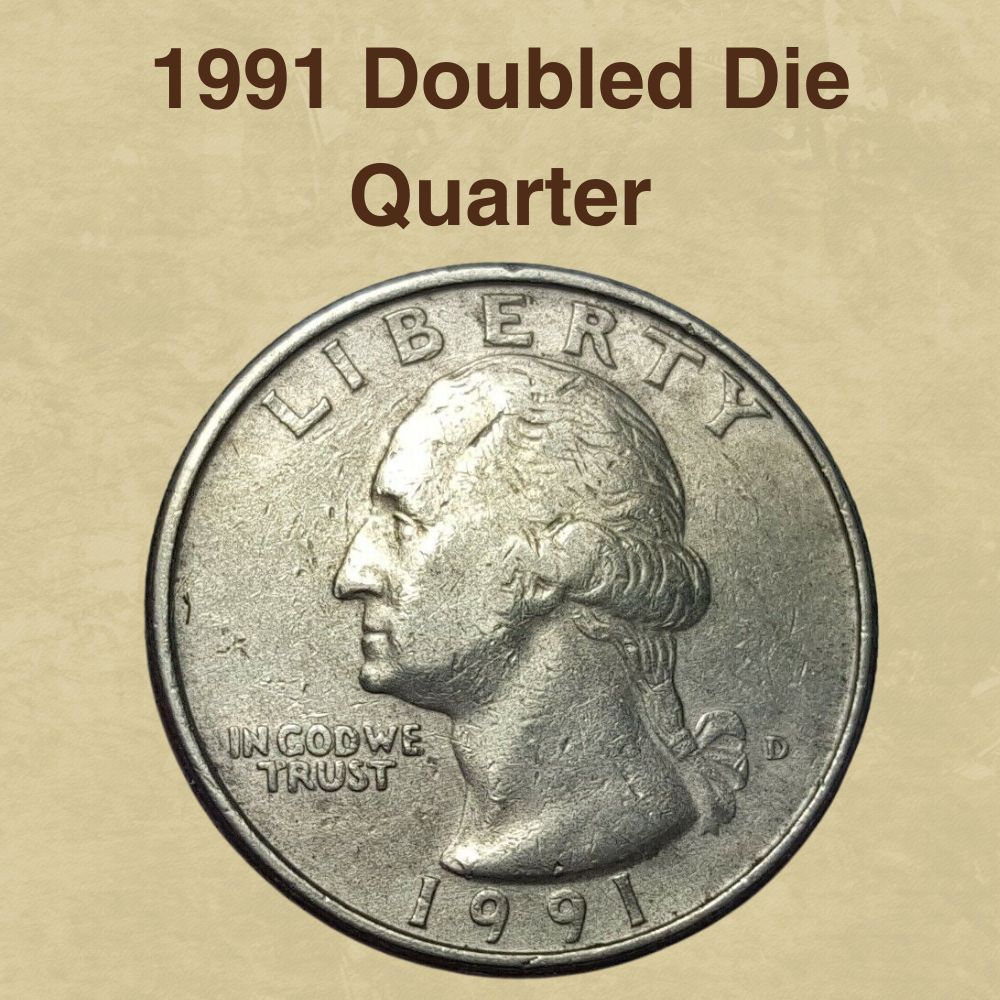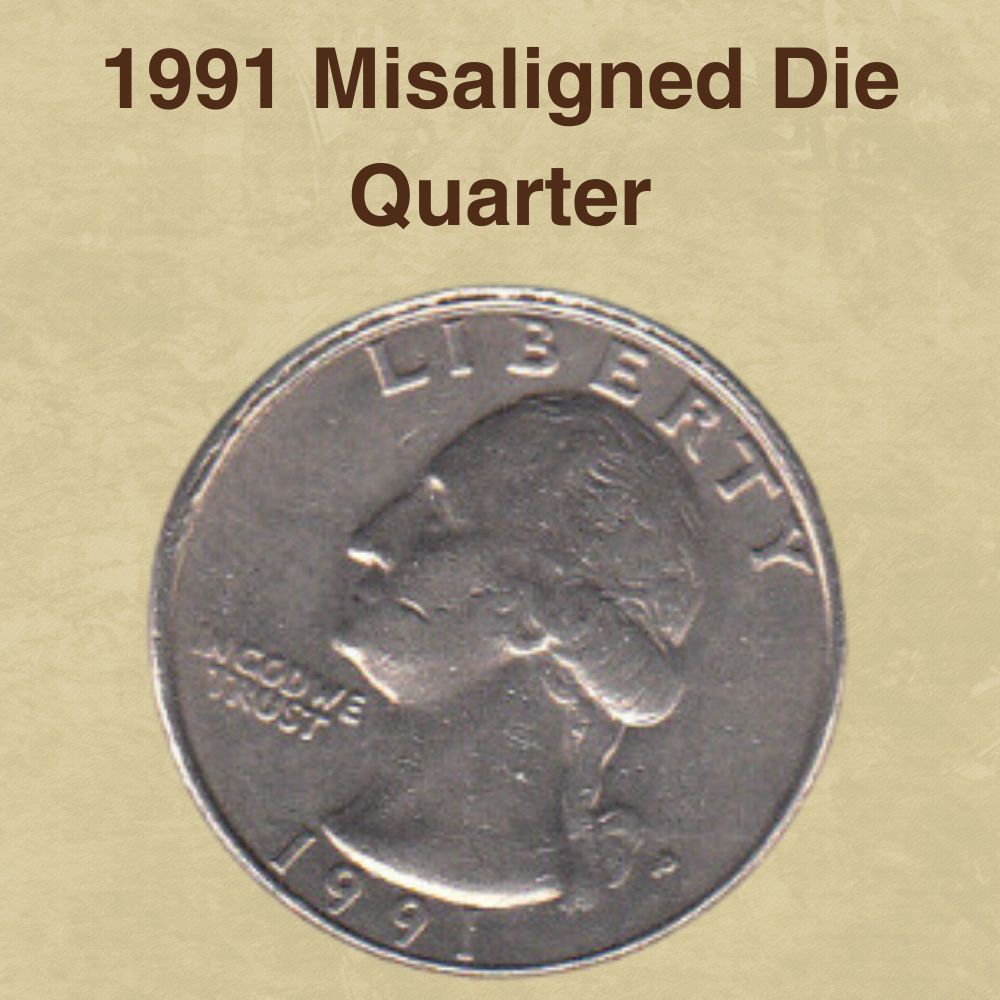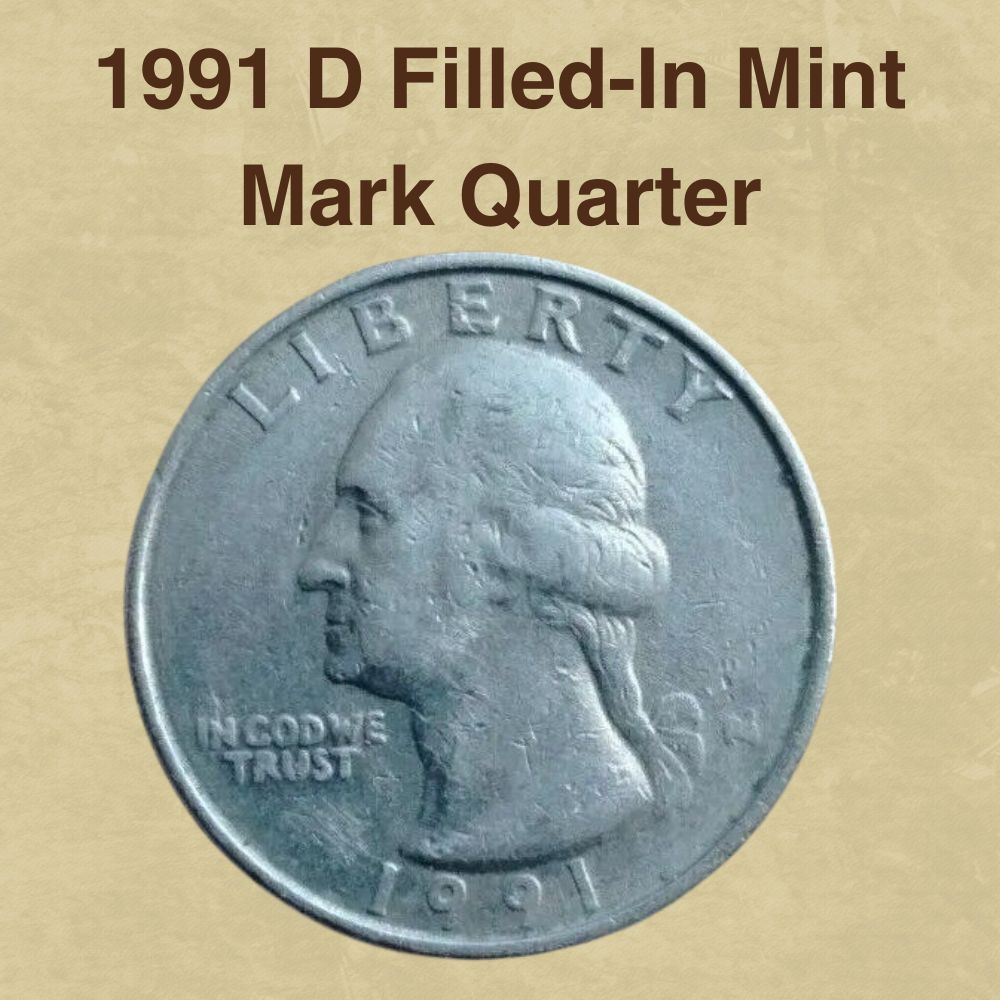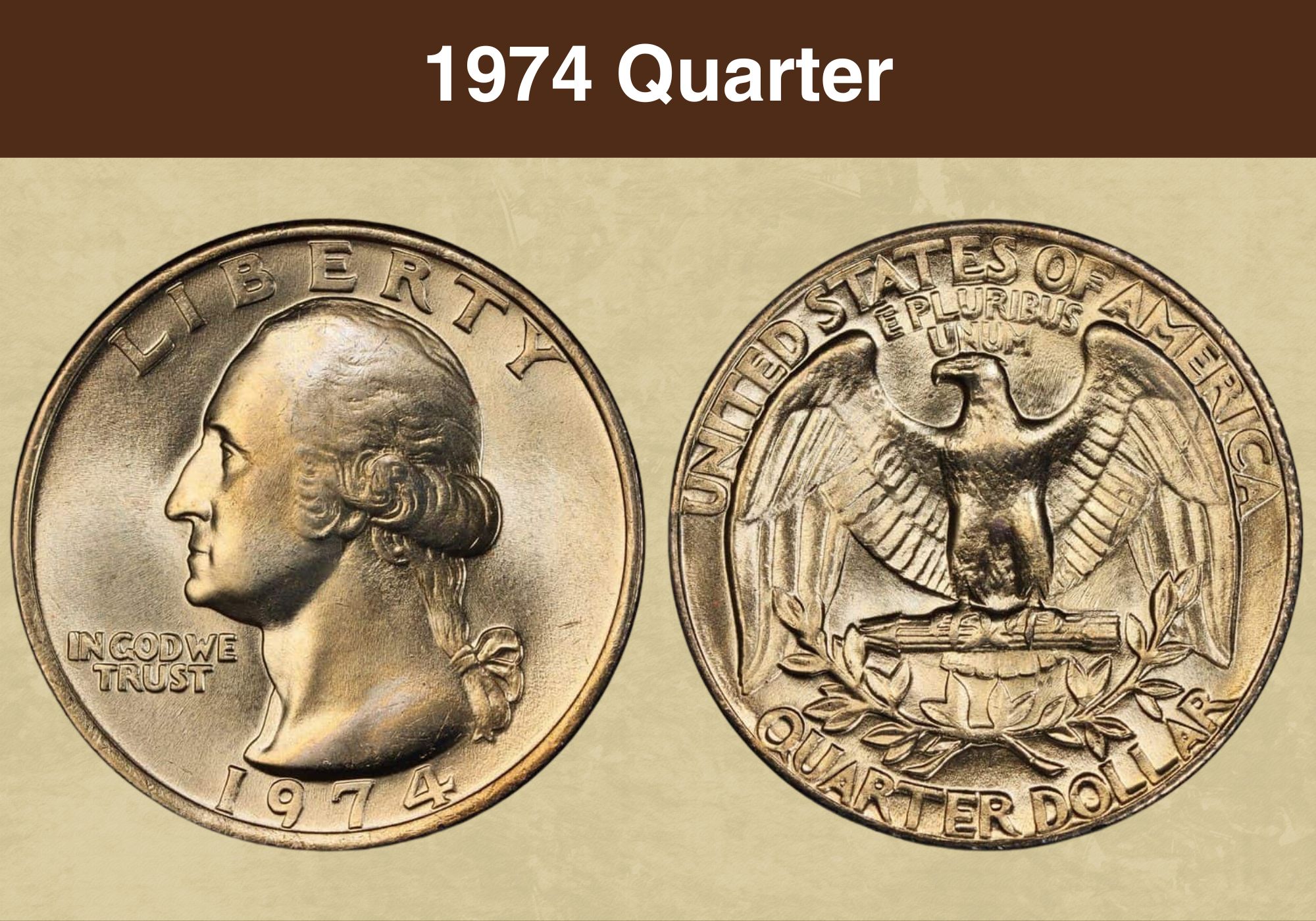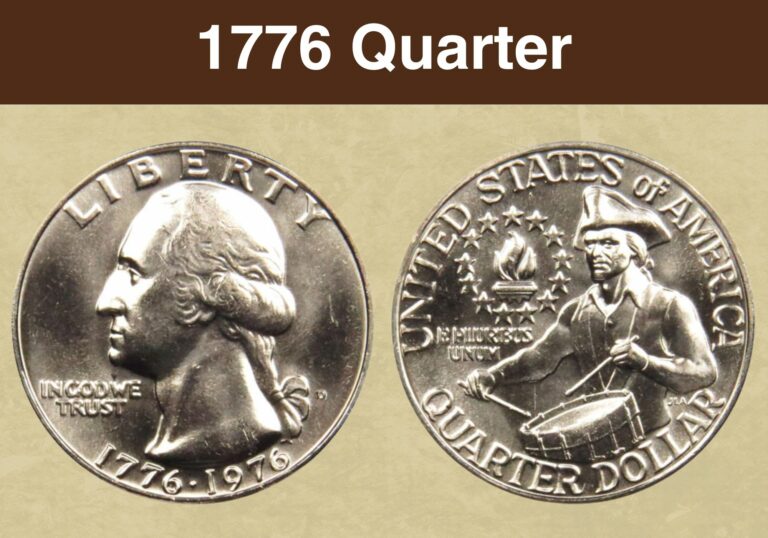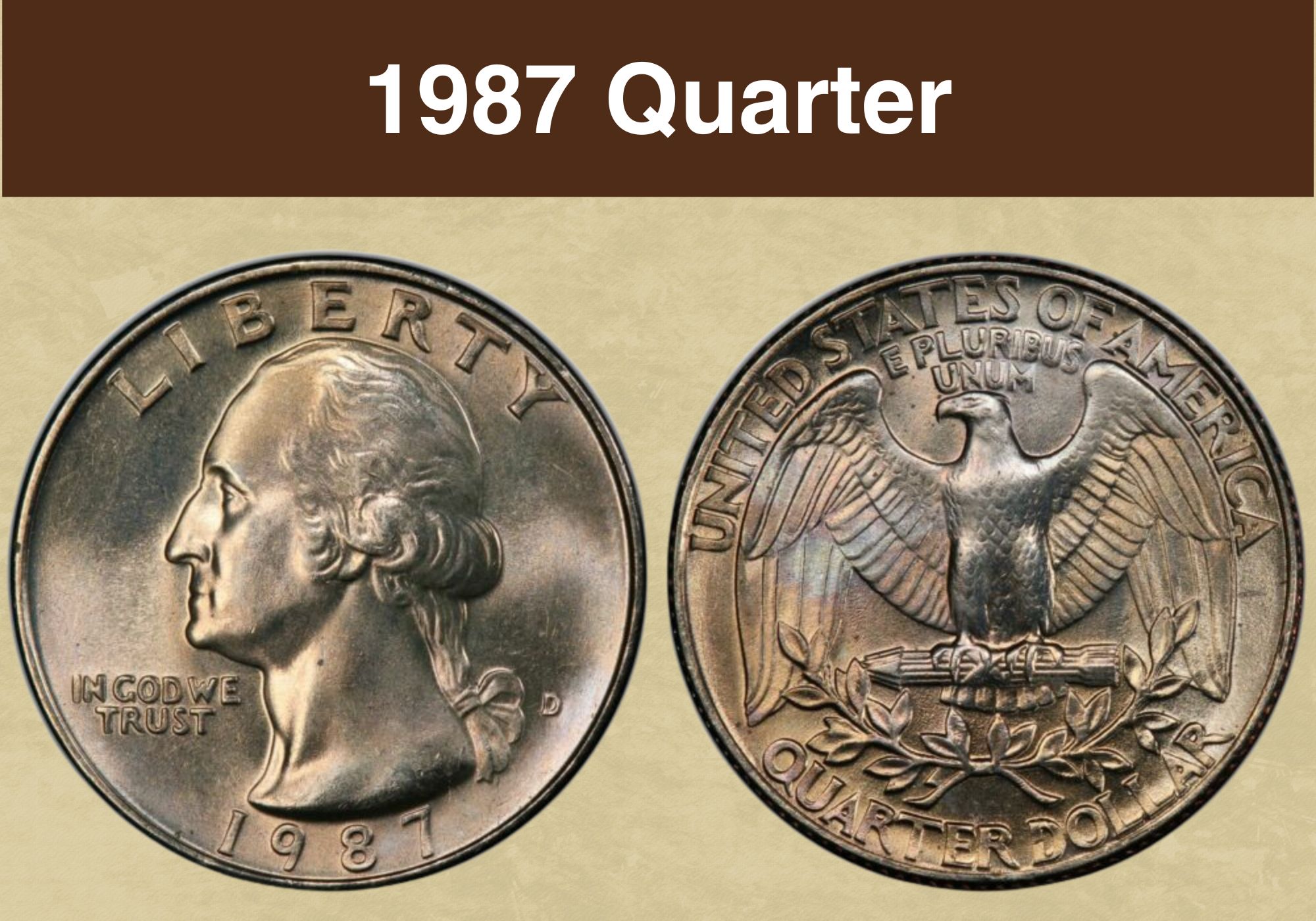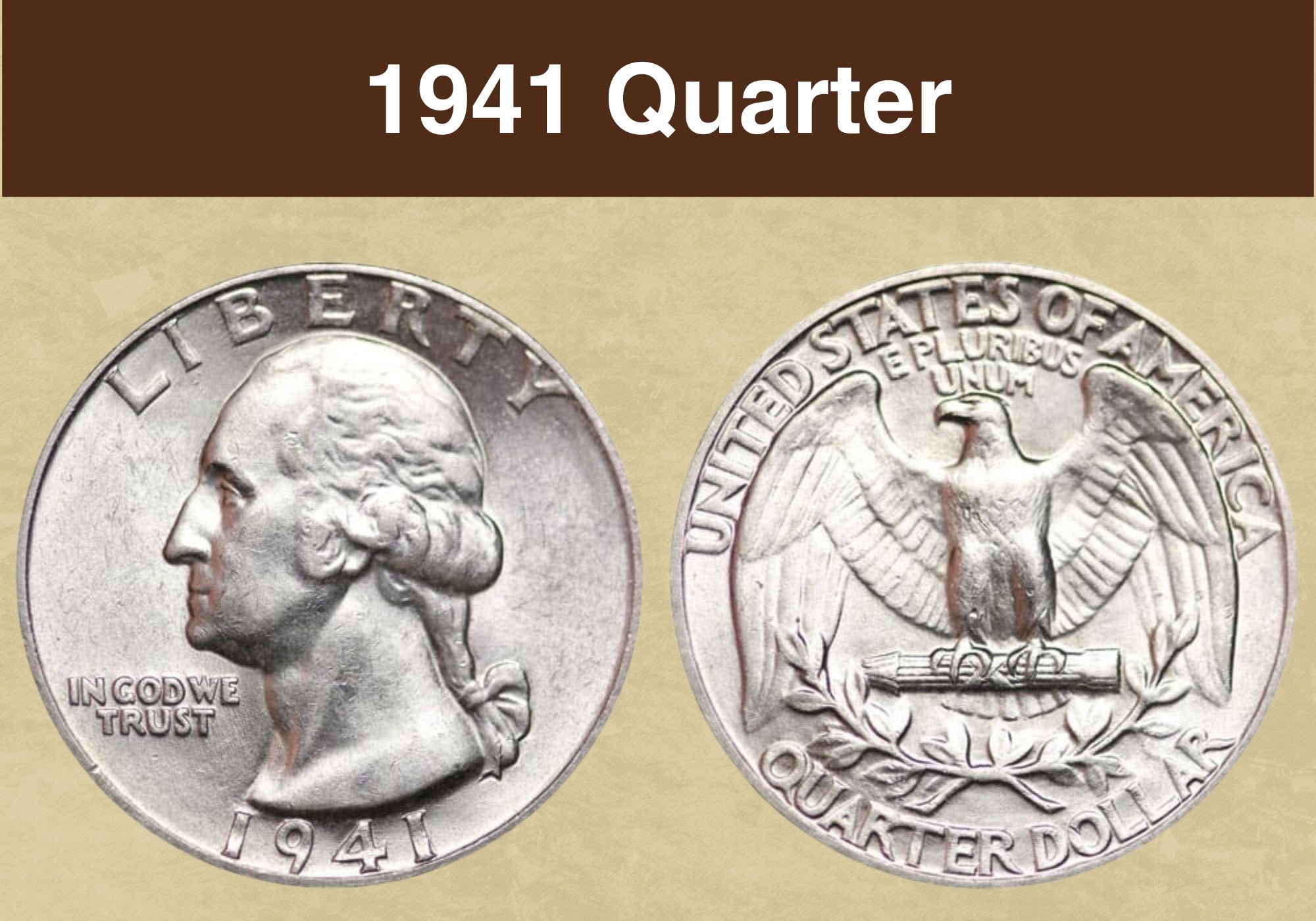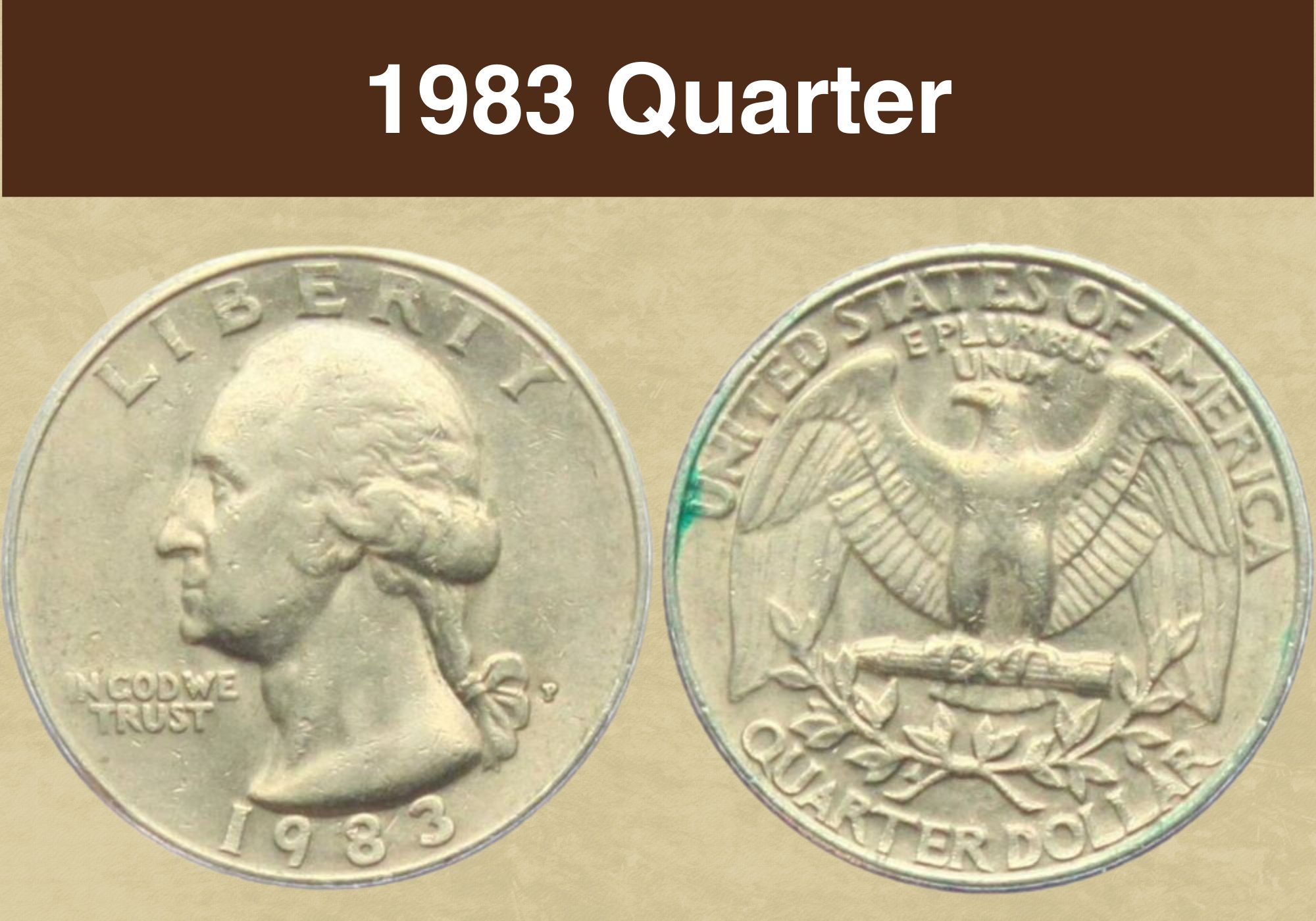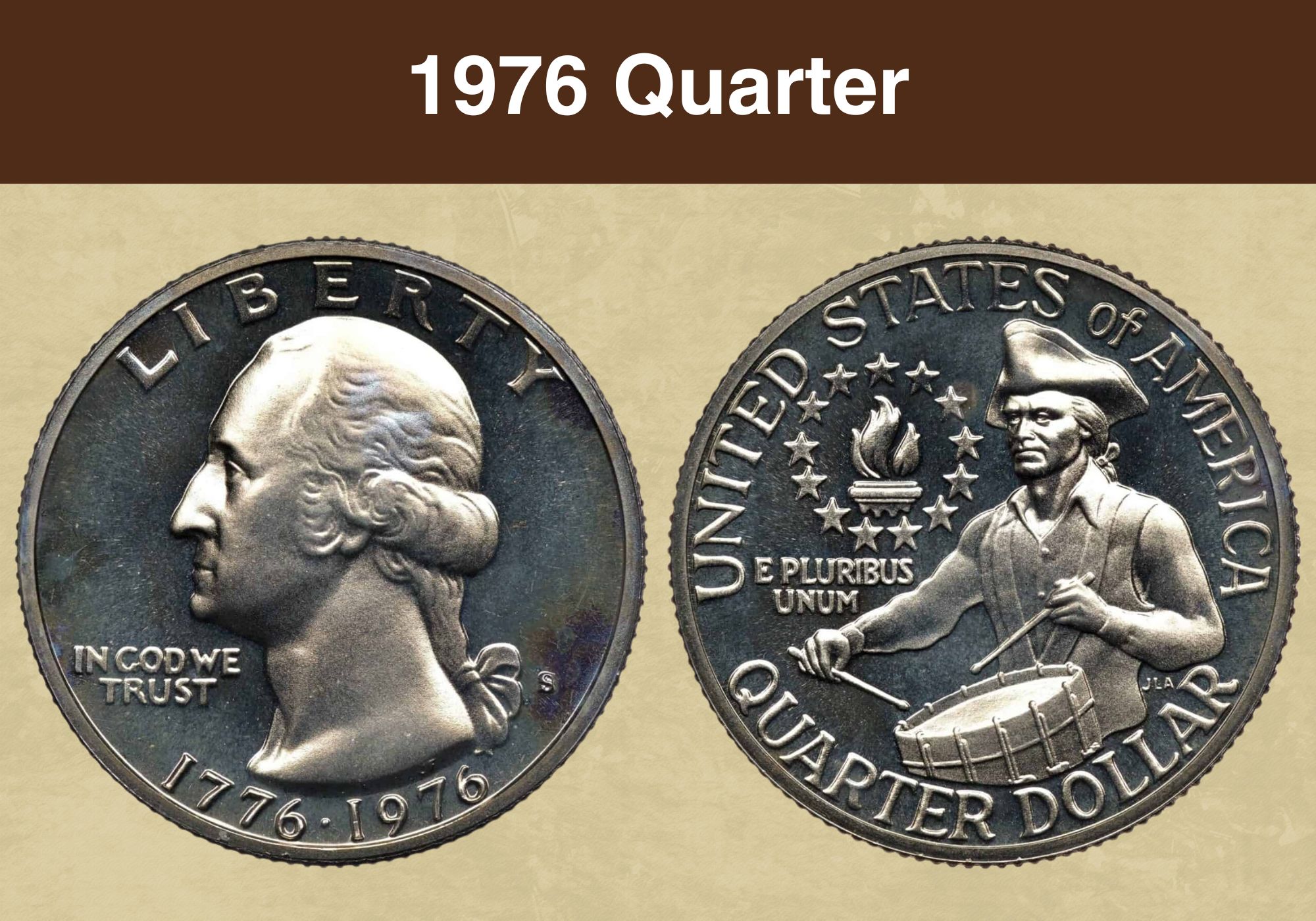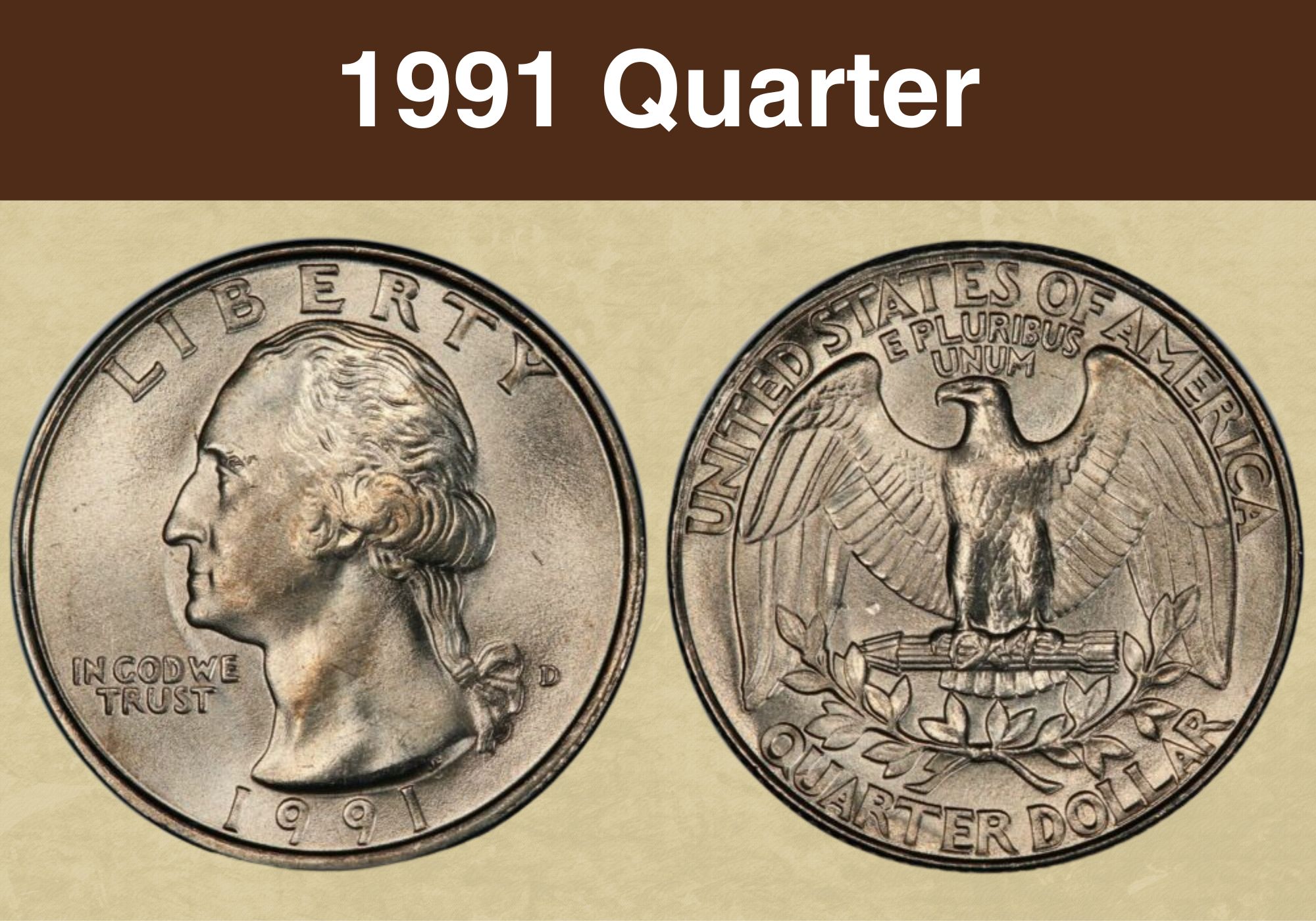
Coin Value Contents Table
Have you discovered a 1991 quarter in your pocket change and are curious whether it would earn you anything were you to sell it?
Washington quarters are some of the longest-running coins in our country’s history.
Collectors love them for their historical and sentimental significance, as they commemorate one of our Founding Fathers and the country’s first president, George Washington.
The 1991 quarters are quite modern coins and may not yet create a buzz among collectors. But, as the years pass and the coin ages, its value might also increase.
So, if you are considering adding a 1991 quarter to your Washington collection, now is a good time as the prices are still affordable.
This guide will explain everything you need to know about the 1991 quarter value.
We will explore the coin’s controversial history and its unique characteristics so you can know what to look for in a Washington quarter worth money.
You will also discover great tips on grading your 1991 quarter and minting errors that can sometimes be worth hundreds of dollars!
So, let’s get started and find out: is a 1991 quarter valuable?
1991 Quarter Value Chart |
||||
| Mint Mark | Good | Fine | Extremely Fine | Uncirculated |
| 1991 No-Mint Mark Quarter Value | $0.30 | $0.30 | $0.30 | $115 |
| 1991-D Quarter Value | $0.30 | $0.30 | $0.30 | $665 |
| 1991-S Proof Quarter Value | – | – | – | $50 |
The History of the 1991 Quarter
The Washington quarter is one of the longest-running currencies in U.S. coinage history. The United States Mint struck the Silver Quarter in 1932, replacing the Standing Liberty Quarter.
Preparations for George Washington’s bicentennial celebrations began as early as 1924 when Congress established the Bicentennial Committee to oversee the fete. However, this group didn’t do much in the preceding years and was replaced by the George Washington Bicentennial Commission in 1930.
As part of the celebrations, the Committee proposed that a Washington half-dollar replace the Walking Liberty half-dollar for one year only.
However, Congress permanently replaced the Standing Liberty Quarter, instructing the Treasury Department and the United States Mint to begin designing the new coin. The new quarter would feature President George Washington’s portrait on the obverse.
The Committee had earlier commissioned sculptor Laura Gardin Fraser to design a George Washington Commemorative medal and anticipated that she would use the same design for the new Washington Quarter.
The Commission of Fine Arts supported the Committee’s recommendation, but the Treasury Department, led by Treasury Secretary Andrew Melon, rejected the proposal by the Committee.
Instead, the Treasury went ahead and held its own competition, ultimately choosing a design by a different sculptor by the name of John Flanagan.
The new Washington quarter went into circulation in 1932 and was struck in silver until 1965, when the Mint changed the composition to copper-nickel due to the soaring silver prices. The coin’s design has remained the same, with a few tweaks done every other year.
Also read: Top 13 Most Valuable State Quarters Worth Money
Features of the 1991 Quarter
In this section, we will explore the unique characteristics of the 1991 quarter. Knowing the features will help you know what to look for in a Washington quarter worth money.
The Obverse of the 1991 Quarter
The obverse of the 1991 quarter shows the left-facing portrait of George Washington’s bust, crafted by the renowned sculptor Jean Antoine-Houdon in 1785. In the portrait, Washington’s hair is held in a low ponytail.
At the very top of the coin, you see the word LIBERTY while the phrase IN GOD WE TRUST appears on the
left just adjacent to Washington’s neck.
The year date, 1991, is shown at the bottom of the inner rim, while the mint mark is adjacent to Washington’s ponytail.
The Reverse of the 1991 Quarter
The reverse is a bit more detailed. It portrays a left-facing bald eagle with wings spread out. The bird is perched on a bunch of arrows, while an olive branch appears underneath.
The arrows represent liberty and freedom, while the olive branch symbolizes peace.
The words UNITED STATES OF AMERICA appear boldly at the top along the rim, followed by the motto E PLURIBUS UNUM, which translates to ‘Out of one, many.”
The coin’s denomination, QUARTER DOLLAR, appears at the base, along the inner rim.
Other Features of the 1991 Quarter
The 1991 Washington quarter is made of a 75% pure copper center and covered by a 25% nickel layer.
With a reeded edge, the coin measures 24.30 millimetres in diameter and weighs 5.67 grams.
Only the coins minted in Denver and San Francisco have a mint mark D and S. The mint mark appears on the obverse adjacent to Lincoln’s ponytail. The Philadelphia coins have no mint mark either on the obverse or reverse.
Also read: Top 16 Most Valuable Modern Quarters Worth Money
1991 Quarter Grading
Knowing how to grade your Washington quarters will help you determine if yours is worth any money. Collectors are generally more interested in uncirculated quarters with little to no wear; these coins are significantly more valuable in the numismatic market.
When you come across a 1991 quarter, first look for signs of wear on high points such as Washington’s cheek, hair curls around his ear, and the hair at the top of his head.
On the reverse, check for signs of wear along the wing’s top edge, the Eagle’s breast feathers, and legs. These parts should retain complete lustre for the coin to qualify as uncirculated.
| # | Grade |
|---|---|
| 1 | Basal State-1 |
| 2 | Fair |
| 3 | Very Fair |
| 4, 5, 6 | Good |
| 7, 8, 10 | Very Good |
| 12, 15 | Fine |
| 20, 30 | Very Fine |
| 40 | Extremely Fine |
| 50 | About Uncirculated |
| 60 | Mint State |
| 65 | Mint State |
| 70 | Mint State |
Please check our grading guides to know your coin scale, It’s the necessary step to know the exact value of your coin.
Check out now: How to Grade Washington Quarter?
1991 Quarter Value Guides
So, are 1991 quarters worth any money?
The value of your 1991 Washington quarter will depend on factors such as the condition, rarity, and mint mark. Your coin might be worth a lot more if it has a significant minting error.
There are three varieties of the 1991 quarter, and we will look at each value below. They include the:
- 1991 No-Mint Mark Quarter
- 1991-D Quarter
- 1991-S Proof Quarter
1991 No-Mint Mark Quarter Value
The Philadelphia Mint recorded a high mintage of 570,968,000 quarters in 1991. This high mintage means that 1991 Washington quarters without a mint mark are very common, especially in lower grades.
The coins’ population starts to dwindle at grade MS66 and MS67; these coins are extremely hard to find. It is common for collectors to wait up to a year to find a 1991 quarter in the gem state that is worth buying.
Because coins in lower grades are more common while those in higher grades are extremely scarce, you will notice a significant price difference across the grades.
A circulated 1991 quarter will fetch between $0.30 and $0.85. On the other hand, an uncirculated coin in gem condition or graded MS67 is valued at about $115.
The most expensive 1991 quarter was auctioned for $492 in a 2013 eBay sale.
1991-D Quarter Value
The Denver Mint had an even higher mintage in 1991, producing a whopping 630,966,693.
These coins are, therefore, very common, and you can easily find them in your pocket change, more than 30 years since they were first struck.
Circulated 1991-D quarters are affordable, costing between $0.30 and $0.85.
Uncirculated and gem-state quarters from the Denver mint are notoriously rare, with only a few known examples in grades MS67 and above. Such pieces can fetch up to $665.
One collector parted with $1,680 for a 1991-D quarter at a 2019 Heritage Auctions sale, making this the most expensive coin in the series to date.
1991-S Proof Quarter Value
In addition to regular strike quarters, the Mint produced proof coins in 1991. The San Francisco facility struck an estimated 2,867,787 Washington quarters.
Proof coins are struck using special dies, resulting in a superior strike, full and frosted details, and shiny surfaces. These coins are visually attractive, separating them from business strikes and even uncirculated coins.
The Mint makes proof coins in limited quantities for collectors, but sometimes the mintage can be noticeably high, as in 1991.
With nearly three million proof coins struck that year, you can easily find 1991-S proof quarters at an affordable price.
A regular 1991-S proof quarter costs about $70, making it affordable even for a new collector with a small budget.
According to the Professional Coin Grading Service (PCGS), one collector paid $558 for a PR70 example during a Heritage Auctions sale in 2013.
This price is quite affordable, considering the coin had achieved the highest grade on the coin-grading scale.
Also read: 17 Most Valuable Quarter Errors Worth Money
Rare 1991 Quarter Errors List
Generally, 1991 quarters are only worth their face value.
But, if you discover an odd-looking coin with a minting error, it might be worth many times more than the face value—some are even worth hundreds of dollars.
Let’s look at some 1991 quarter errors worth money that you should pay attention to:
1991 Doubled Die Quarter Error
Doubled-die are some of the most common minting errors, and you will find quite a few in the 1991 Washington quarter series.
Look for doubling on the wordings, particularly the words UNITED and DOLLAR on the reverse. Only the obverse doubling is sometimes visible on the word LIBERTY.
A 1991 doubled die quarter error can fetch between $50 and $100 depending on the coin’s condition.
1991 Misaligned Die Quarter Error
Misaligned die errors occur when one of the dies, usually the hammer die, is not aligned with the anvil die. This results in a subtle offset on the obverse (or reverse in case of a misaligned anvil hammer).
This type of error is common during the minting process, so check for it on any 1991 quarters you come across.
A 1991 quarter with a misaligned die error may sell for as much as $10 to $25. You might make good money selling several of these coins. On the other hand, such an error coin is quite affordable, so you can obtain it easily and sell it or add it to your collection.
1991 Spitting Eagle Quarter Error
This is an interesting error, unique to Washington quarters, in which there is a line from the eagle’s beak to the inner rim on the reverse. The line’s positioning makes it seem like the eagle is spitting.
The line might have resulted from a strike-through or a die chip, which made an impression on the planchet.
A 1991 quarter with a spitting eagle error is rare and can fetch between $65 and $100, depending on the coin’s condition.
1991 D Filled-In Mint Mark Quarter Error
In some 1991 quarters, you will notice that the mint mark D appears more like a blob. This is known as a filled-in mint mark error.
This error occurs when the die used to make the mint mark has a chip or crack filled with metal, so the metal fills in the mint mark, creating a blob-like image.
1991 Struck Through Grease Quarter Error
A strike-through error happens when a foreign object gets between the planchet and the striking die.
The foreign object can be a dust speckle, grease, or debris, preventing the die from fully transferring all the design elements to the planchet.
A 1991 quarter with a struck-through error is worth about $20 and $50, with uncirculated coins costing more.
Where to Sell Your 1991 Quarter ?
Now that you know the value of your coins, do you know where to sell those coins online easily? Don’t worry, I’ve compiled a list of these sites, including their introduction, pros, and cons.
Check out now: Best Places To Sell Coins Online (Pros & Cons)
FAQ
Is a 1991 D Mint Mark US Washington Quarter dollar rare?
A 1991-D Washington quarter is common. You can still find these coins in circulation today, easily and affordably, given that more than 500 million were minted. That said, 1991-D quarters in mint state are rare and can take a year or more to find, making them noticeably pricey.
How do I know if I have a rare 1991 quarter?
The truth is, 1991 quarters are generally not rare; these coins are abundant on the rarity scale, and you will easily find them in circulation. If a 1991 quarter seems uncirculated and still in mint or gem-state, you might be looking at a rare quarter. Most quarters produced that year, either at the Philadelphia or Denver mint, were put into circulation, so uncirculated coins are very rare. Check for signs of wear and tear; an uncirculated coin should have little to no flaws.
Is a 1991 quarter worth collecting?
If you want to make a large profit immediately, there may be better coins than the 1991 quarter. Currently, this coin is only worth its value. But, the chances are that the value will increase with time, as with old coins; the older the coin, the more valuable it might be. So, the 1991 quarter might be worth collecting if you have a long-term strategy to sell later when the coin has ‘’matured.’’

